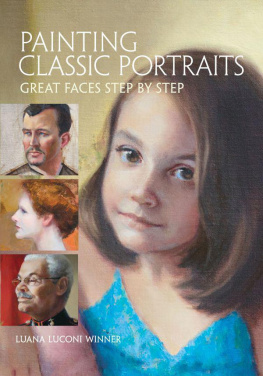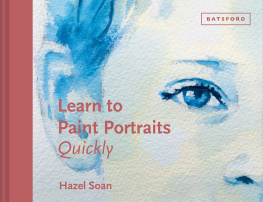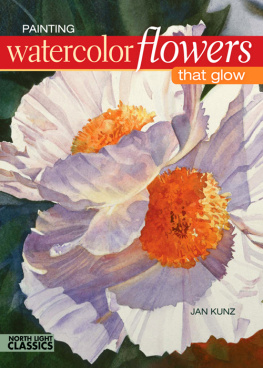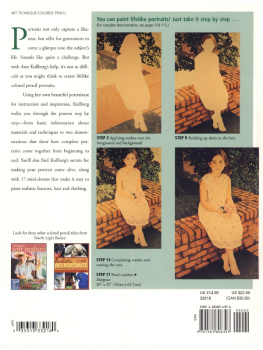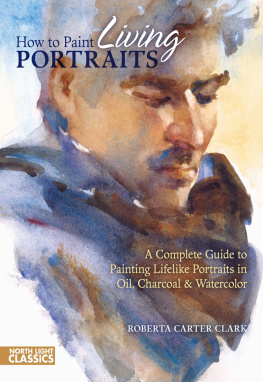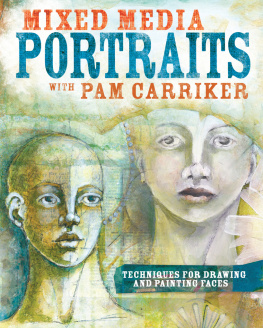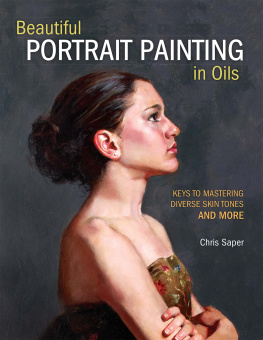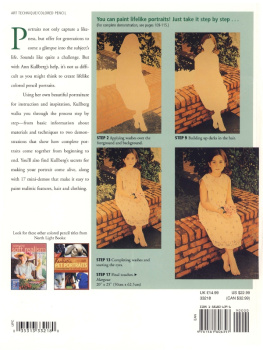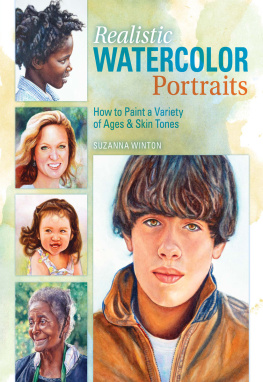Luana Luconi Winner - Painting classic portraits : great faces step by step
Here you can read online Luana Luconi Winner - Painting classic portraits : great faces step by step full text of the book (entire story) in english for free. Download pdf and epub, get meaning, cover and reviews about this ebook. year: 2013, publisher: North Light Books, genre: Home and family. Description of the work, (preface) as well as reviews are available. Best literature library LitArk.com created for fans of good reading and offers a wide selection of genres:
Romance novel
Science fiction
Adventure
Detective
Science
History
Home and family
Prose
Art
Politics
Computer
Non-fiction
Religion
Business
Children
Humor
Choose a favorite category and find really read worthwhile books. Enjoy immersion in the world of imagination, feel the emotions of the characters or learn something new for yourself, make an fascinating discovery.
- Book:Painting classic portraits : great faces step by step
- Author:
- Publisher:North Light Books
- Genre:
- Year:2013
- Rating:4 / 5
- Favourites:Add to favourites
- Your mark:
Painting classic portraits : great faces step by step: summary, description and annotation
We offer to read an annotation, description, summary or preface (depends on what the author of the book "Painting classic portraits : great faces step by step" wrote himself). If you haven't found the necessary information about the book — write in the comments, we will try to find it.
Easy techniques for true-to-life portraits!
If you think all portrait-painting books are the same, think again. This book will inspire you to approach your canvas with renewed (or newly discovered) enthusiasm and confidence. Using modern-day techniques, Luana Luconi Winner shows you how to capture not only a physical likeness, but also the personality and unique, natural expression of your subject. Her direct, relaxed teaching style takes the intimidation out of painting portraits, empowering artists of any skill level and medium to turn ordinary people into exceptional works of art.
- Time-tested, easy-to-follow techniques for achieving accurate facial shapes and proportions.
- 10 quick-reference color charts make it easy to mix skin tones and hair colors for a full range of complexions and ethnicities.
- Mini-demonstrations show how to use a variety of mediums--graphite, charcoal, pastels, watercolor and oils--to create sketches and preliminary studies.
- Tips on using a digital camera to generate reference material and troubleshoot your compositions.
- Three start-to-finish painting demonstrations in oils and pastels illustrate the particulars of painting males and females, adults and children.
Destined to become a classic in its own right, Painting Classic Portraits covers every step in the process--from selecting clothes, backgrounds and props that tell a story, to using design elements to stir emotion in your viewers. Its everything you need to know to create timeless portraits and great paintings.
Luana Luconi Winner: author's other books
Who wrote Painting classic portraits : great faces step by step? Find out the surname, the name of the author of the book and a list of all author's works by series.

